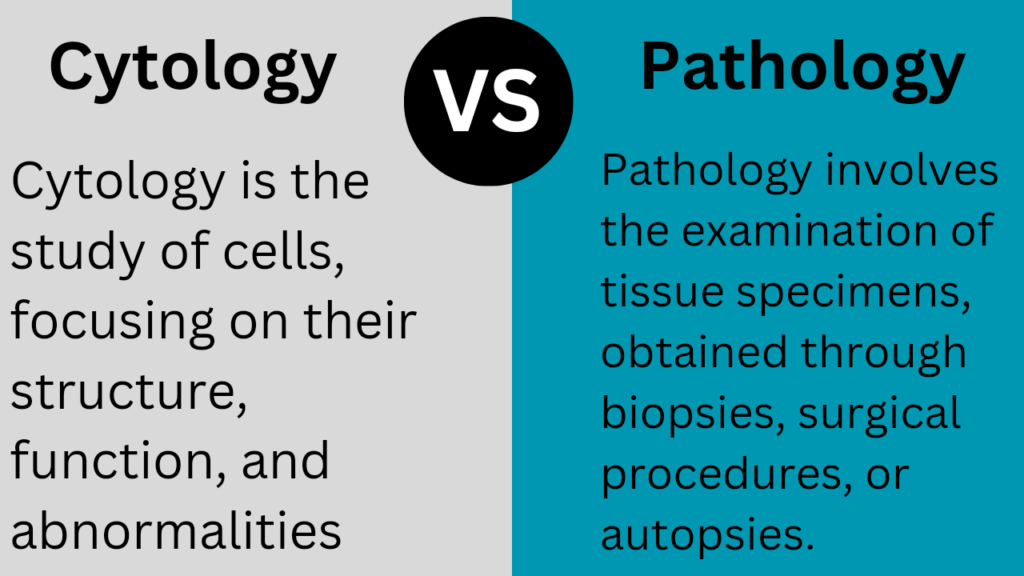Cytology and pathology are two vital branches of diagnostic medicine, each playing a distinct role in the identification and understanding of diseases.
Here you will learn about ” cytology vs Pathology”.
What is Cytology?
Cytology is the study of cells, focusing on their structure, function, and abnormalities. It involves the examination of individual cells, often obtained through non-invasive procedures such as fine needle aspiration (FNA) or Pap smears.
Characteristics of Cytology
- Cellular Examination.It provide insights into cellular morphology and identifying abnormal changes.
- Non-invasive Techniques: Sample collection in cytology is often achieved through minimally invasive procedures,
- Screening and Early Detection: It enable early detection of abnormalities before they progress into more advanced stages.
What is pathology?
Pathology involves the examination of tissue specimens, obtained through biopsies, surgical procedures, or autopsies.
Pathologists analyze these samples macroscopically and microscopically, aiming to understand the nature and extent of diseases.
Characteristics of Pathology
- Tissue Examination: Pathology involve the comprehensive analysis of the structural and functional changes within organs.
- Invasive Techniques: Tissue samples in pathology are often obtained through invasive procedures such as biopsies. It’s more painful then cytology.
- Comprehensive Diagnosis: It provides a broader perspective on diseases, offering detailed insights into the characteristics and behavior of abnormal tissues.
